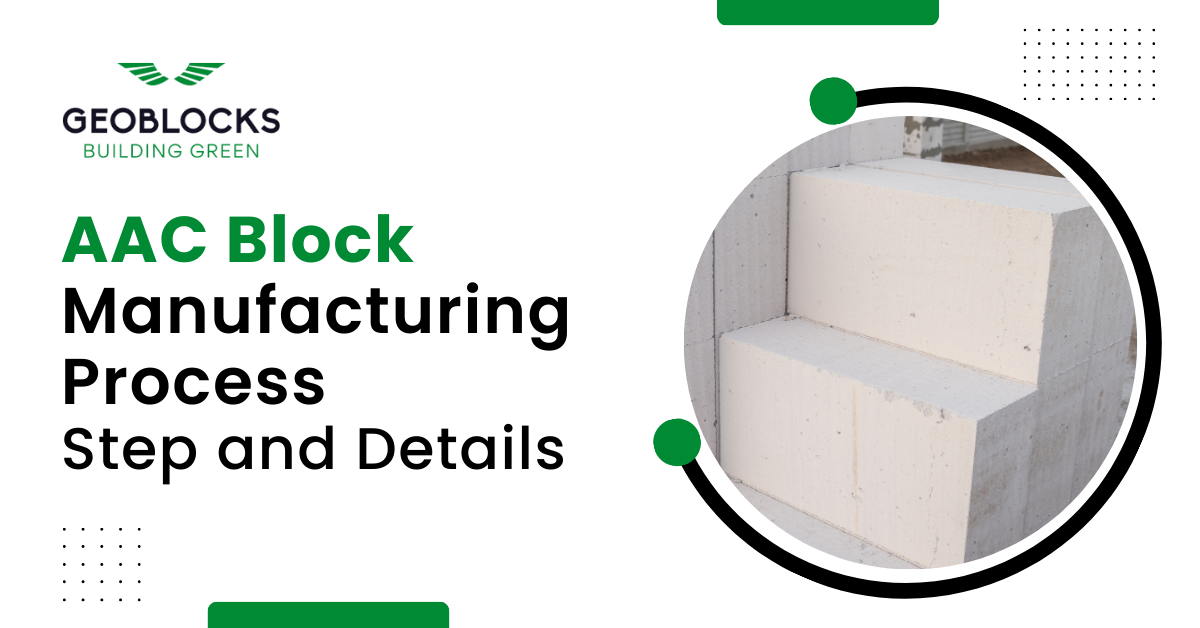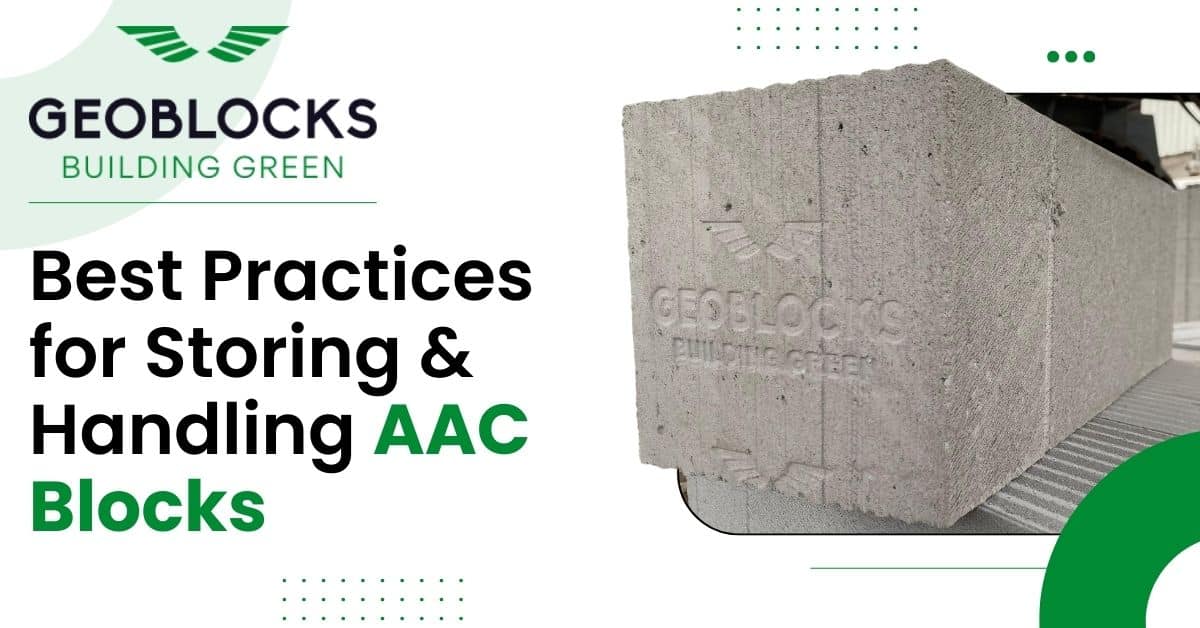Installing AAC blocks the right way is crucial for long-lasting, energy-efficient, and eco-friendly construction. Whether…

In the Construction Industry, AAC (Autoclaved Aerated Concrete) Blocks have gained significant popularity due to their Lightweight, Energy Efficiency, and Sustainability. Understanding the AAC Block Manufacturing Process can help Builders and Contractors appreciate the Benefits and Applications of this Innovative Building Material. This blog provides a comprehensive guide to the steps and details involved in the AAC Block manufacturing process.
What are AAC Blocks?
AAC Blocks are Lightweight, Precast Foam Concrete Building Materials suitable for Producing Concrete Masonry Units like Blocks. They are made from a Mixture of Sand (or fly ash), Cement, Lime, Gypsum, Water, and an Expanding Agent like Aluminum Powder. The Blocks are cured under High-pressure Steam, which gives them their Unique Properties.
AAC Block Manufacturing Process
The Manufacturing Process of AAC Blocks involves Several Key Steps:
Step 1: Raw Material Preparation
The First Step in the AAC Block Manufacturing Process is the Preparation of Raw Materials. The Primary AAC Block Raw Materials includes:
Fly Ash or Sand: Acts as the Main Component.
Cement: Provides Strength.
Lime: Enhances Durability.
Gypsum: Acts as a Binder.
Aluminum Powder: Functions as an Aerating Agent.
These materials are carefully Measured and Proportioned to Ensure Consistency in the Final Product.
Step 2: Mixing
The measured Raw Materials are Mixed in a Predetermined Ratio in a Large Mixing Drum. Water is added to the Dry Mix to form a Slurry. This Slurry is then Thoroughly Mixed to achieve a Uniform Consistency. This is a Crucial Step in the AAC Block Manufacturing Process Flow Chart, as the Quality of the Mix directly Affects the Final Product’s Strength and Stability.
Step 3: Pouring and Foaming
The Mixed Slurry is poured into Molds. The Aluminum Powder reacts with the Alkaline Environment, producing Hydrogen Gas Bubbles. This Reaction causes the Slurry to Expand, creating a Cellular Structure filled with Tiny Air Pockets. This Foaming process Imparts Lightweight Properties to the AAC Blocks.
Step 4: Pre-Curing
Once the Molds are Filled, they are Left to Pre-cure in a Controlled Environment for Several Hours. During this Phase, the Slurry sets and Gains Enough Strength to be Handled. The Pre-curing Process ensures that the Blocks can be safely removed from the mold without Deforming.
Step 5: Cutting
After Pre-curing, the Semi-solid Blocks are Removed from the Mold and Cut into the Desired Sizes using High-precision Cutting Machines. The Cutting Process is crucial to ensure Uniformity and Accuracy in the Dimensions of the AAC Blocks. This Step in the AAC Block Manufacturing Process Flow Chart contributes to the Blocks’ Consistent Quality.
Step 6: Autoclaving
The Cut Blocks are then placed in an Autoclave, a Large Pressure Chamber. The Blocks are Subjected to High-pressure Steam curing at Temperatures of Around 180-200°C and Pressures of 10-12 Bars. This Autoclaving Process typically Lasts for 8-12 Hours and imparts High Strength, Dimensional Stability, and Durability to the Blocks.
Step 7: Quality Control and Packaging
After Autoclaving, the AAC Blocks undergo Rigorous Quality Control checks to ensure they meet Industry Standards and Specifications. The Blocks are Tested for Density, Strength, and other Critical Parameters. Once they pass the Quality Checks, they are Packaged and Stored for Distribution.
Frequently Asked Questions
What are the Key AAC Block Details to know?
AAC Blocks are Lightweight, provide Excellent Thermal Insulation, have High Fire Resistance, and are Eco-friendly.
Where can I find an AAC Block Manufacturing Plant in India?
India has several AAC Block Manufacturing Plants, with Key Facilities located in States like Gujarat, Maharashtra, and Tamil Nadu.
What is the Main AAC Block Raw Material?
The main Raw Materials include Fly Ash or Sand, Cement, Lime, Gypsum, and Aluminum Powder.
Can you Explain the Manufacturing Process of AAC Blocks?
The Process involves Raw Material Preparation, Mixing, Pouring and Foaming, Pre-curing, Cutting, Autoclaving, and Quality Control.
Conclusion
The Manufacturing Process of AAC Blocks is a Meticulous and Scientifically driven Procedure that ensures the Production of High-quality Building Materials. From Raw Material Preparation to Autoclaving, Each Step is designed to Enhance the Blocks’ Properties, making them a Preferred Choice for Modern Construction. For Reliable AAC Blocks that meet the Highest Standards, Choose Products from a Reputable AAC Block Manufacturing Plant in India like Geoblocks, where Quality and Innovation are at the Forefront of Production.




